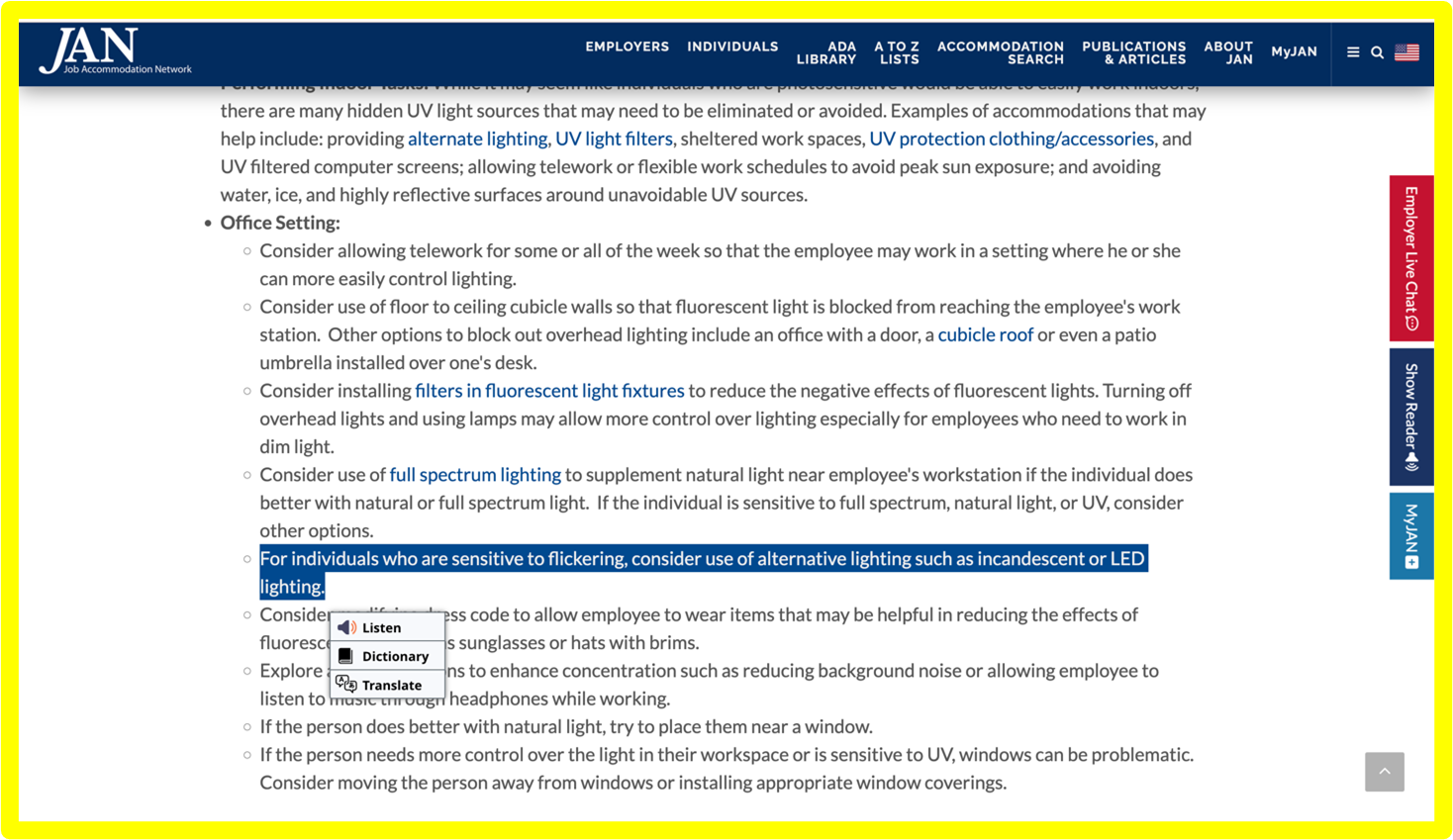Submission Date:
Question:
A member of the public called me regarding the trend to switch to LED lighting in many libraries, especially rural libraries applying for NYS Public Library Construction Funding. She told me that she suffers from Photosensitive Epilepsy, and LED lights (among other light sources) cause her to have seizures, which result in injuries. She said this disease has limited access to much of what we all take for granted.
The local library, across the street, was the only place she could go because of the older lighting. The library is about to undergo renovation, and LED lighting may be part of the project because of its cost-savings and environmental impact.
She would like the library board to reconsider and asked why the library has not conducted a “reduction of access survey” because public libraries need to maintain or improve access. Are there reasonable accommodations combined to be fiscally responsible?
Thanks.
Answer:
This question is at the tip of a large and fast-moving iceberg.
As with many iceberg-type issues, when I started my research, I didn’t know how deep things went.
So, I did my usual thing when a question involves the Americans with Disabilities Act (“ADA”), went to AskJAN.org, to see what they had to say about LEDs and epilepsy.
As it turns out, as of June 6, 2024, AskJAN wasn’t really hip to this issue (LED’s triggering seizures), which--if you perform a simple Google check--you can see is emerging as a “thing.”
In fact, on their resource page for photosensitivity,[1] LEDs were listed as a possible accommodation, rather than a possible trigger to be mitigated:

While frustrating, this actually answers the question: when a disability is triggered by environmental conditions (person-made or otherwise), if the need for the accommodation is not broad (like the need caused by limited mobility) it doesn’t become part of design criteria (like ramps designed to address limited mobility). This means it doesn’t automatically get factored in when places of public accommodation are renovated.
Of course, just because something “doesn’t automatically get factored in” doesn’t mean it isn’t considered when a person requests an accommodation. For instance, an employee whose migraines or seizures were triggered by LEDs could request a change in lighting, or to work from an alternate location, and that might be a reasonable accommodation. But again, that is different from a lighting choice during the design phase of a building renovation.
Now, I could leave it there, but we haven’t quite looked at the entire iceberg. So, for those who want to…
- See some very interesting, annotated background on photosensitivity as a trigger of epilepsy;
- Get in touch with the groundswell of J.Q. Public’s resistance to LED lighting, not only as a disability concern but a “quality of life” issue; and
- Get a sense of where the federal government—the primary enforcer of the ADA—sits with LED lights as of May 24, 2024;
… I encourage you to read the U.S. Food & Drug Administration’s reply to the Soft Lights Foundation’s[2] request that the FDA regulate LEDs,[3] a request made in (small) part because there is a growing body of evidence that they can trigger seizures.
The good news is that while they are not required to reject LED lighting on the basis that it could trigger a seizure in a patron, libraries in New York are empowered to make their own decisions about lighting and can take into consideration the potential impact lighting can have on people—employees and patrons—and buy accordingly.[4]
[1] I appreciate that in this case, the photosensitivity is a trigger for epilepsy, not the actual disability. But still.
[2] Yes, there is a “Soft Lights Foundation” whose mission is to advocate “for the protection of people and the environment from the harms of Visible Light radiation emitted by products that use Light Emitting Diodes.” For more information, visit: https://www.softlights.org/about/
[3] The FDA’s churlish reply is here: https://downloads.regulations.gov/FDA-2023-P-3879-0010/attachment_1.pdf
[4] Full disclosure: I hate LED lighting. Hate. Hate. Hate. We have some in my office in Buffalo, because it really is efficient, but it’s behind thick panels to dull the de-humanizing impact of its cold, hellish, dystopian lumens.
Tag:
Accessibility, ADA, Accommodations, Construction, Disability
